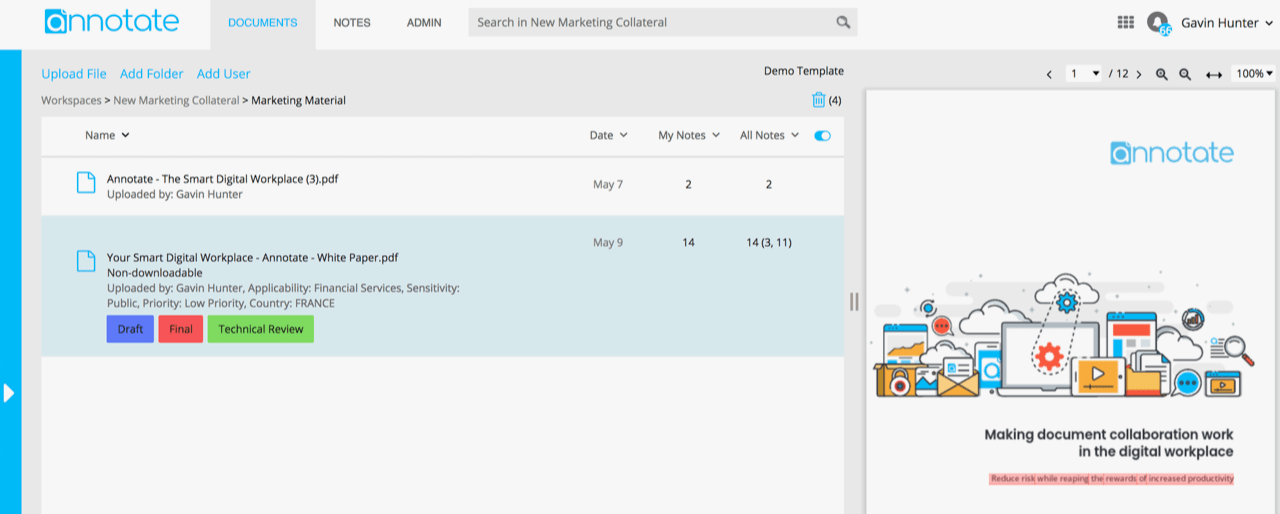
User Engagement and Control
Today’s employees want the freedom to collaborate flexibility, without lots of restrictions. But your organization needs to make sure its information and documents are being handled in a secure way. Annotate’s in-document collaboration delivers the flexible, user-friendly experience that your teams are looking for. And because we offer secure cloud, private cloud and on-premise installations, with central administration over workspaces, you decide how much control, security and management you place over the full system.
“We found that Annotate reflects the real life working practices and behaviors of our teams. This means that employees have been quicker to embrace the tool and have seen the benefits sooner, accelerating adoption across the organization.”

Keep Information Secure
We know that information security matters to you. That’s why Annotate lets you define, manage user permissions with granular access privileges on individual workspaces, and log, audit and control user activity. You decide whether you want to store your documents within our secure cloud service, your own private cloud service or locally on your own servers, behind your firewall. Annotate integrates with your existing corporate security models such as LDAP and single sign-on. Our cloud services comply with the relevant international risk management standards for offices and data centers, such as SSAE 16 Type I and Type II, ISO 27001 and US- EU Safe Harbor.
Integrate Into Your Applications
Embed Annotate as a platform for in-document collaboration in your own applications such as content management systems. You decide how you integrate Annotate into your web apps, mobile web apps, hybrid apps or native mobile apps. Deploy Annotate as a service in the cloud, in your own private cloud or on your own data centers.
A Single Platform
With Annotate, you can replace certain point solutions in order to streamline your business, reduce information silos, standardize collaboration, enable compliance and reduce overall running costs of your document management and collaboration function.

